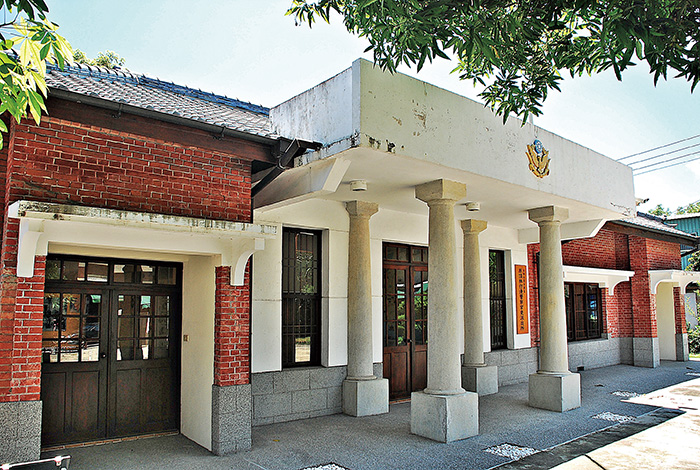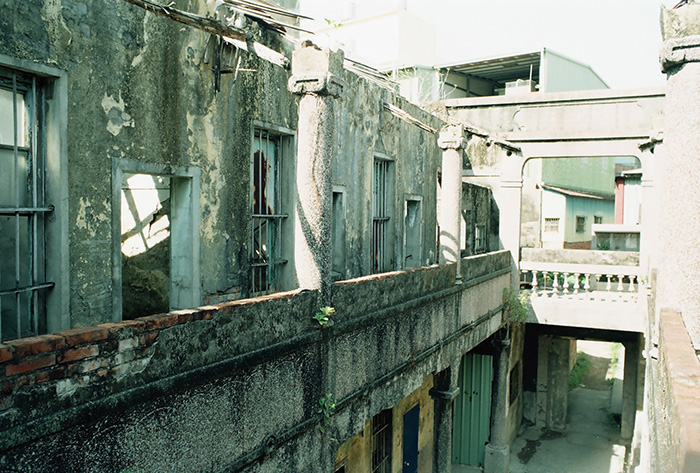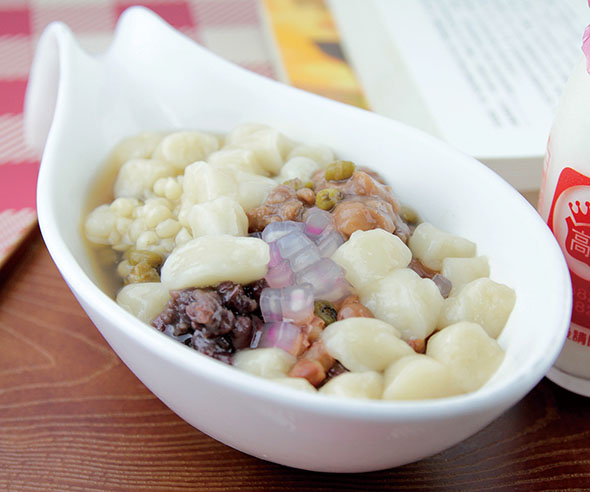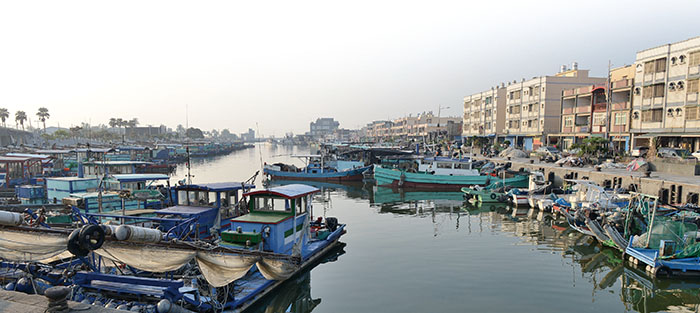Exploring Linyuan District
Exploring Linyuan District
◎English translation: Hou Ya-ting
◎Photos by MUJI Do, Pao Chung-hui, Yu Jia-rong
◎Photo courtesy of Liou Yu-sin
 My friend Ting-jhang invited me join an excursion to Linyuan District, where his grandparents live. Neither of us reside in Linyuan, but exploring the area around my friend's grandparents' house immersed us in local heritage. We heard many stories about the place, putting Ting-jhang in a mood to reminisce.
My friend Ting-jhang invited me join an excursion to Linyuan District, where his grandparents live. Neither of us reside in Linyuan, but exploring the area around my friend's grandparents' house immersed us in local heritage. We heard many stories about the place, putting Ting-jhang in a mood to reminisce.
Our historical excursion kicked off at Ting-jhang's grandparents' house on Linyuan North Road, parallel with Fusing Street. Ting-jhang pointed out that Fusing Street runs north-south, is a one-way street 500m long, and has two places of worship: Dadaogong Temple in the north, and Fude Temple in the south. Nowadays, the street does not look so impressive, but in the past it was an important place.
During the Cing Dynasty, which ruled Taiwan until 1895, Fusing Street was known as Dinglinzihbian Street. A century ago, Dinglinzihbian Street was close to Midianzihgou Pier, where local agriculture produce and others goods could be shipped out via Gusi River and its lagoon. As a result, the street was a commercial center.
During the Japanese colonial period from 1895 to 1945, Dinglinzihbian Street could not accommodate the needs of commerce, so what is now Linyuan North Road was constructed. A decade later, Ting-jhang's grandfather moved to that road.
The gradual silting up of the lagoon inevitably ended Gusi River's transportation role. The area became reclaimed land in the southern part of Linyuan District, and the lagoon's disappearance caused many businesses to relocate.
In Linyuan's heyday during the Japanese era, it boasted three movie theaters: the Linyuan, Dawutai and Yushan theaters. The first to be established was Linyuan Theater, situated in the bustling downtown between Linyuan North Road and Fusing Street. Beside the theater was Anle Restaurant, a two-floor brick building built in 1930 and the most extravagant nightclub in the area at that time. After World War II, it was remodeled as a cabaret and a hotel. The currently-abandoned Anle Restaurant now sits among residential buildings. It has been featured in the TV show A Touch of Green. It is also popular with photographers, and we met several visitors taking pictures. The restaurant no longer lives up to its former glory, yet the original layout, stone stairs, baroque-style columns, patterned drain covers, dark red tiles, and the barely readable Anle Restaurant plaque are tangible evidence of local history.

Chatting with a local lady, we discovered that she used to be a frequent visitor to a charming pocket garden within the old wooden post office near Linyuan Theater and Anle Restaurant. Unfortunately, the post office was demolished long ago. She suggested we visit the Former Dinglinzihbian Police Station, a cultural landmark built in 1898.
Heading southwest, we found the remaining back part of Yushan Theater at the end of Kainan Road. We met a grocery-store proprietor who told us the story of the theater, which was known as Kainan Theater during its glamorous 1970s heyday. He said that whenever Yushan Theater was showing films, crowds and a night market would paralyze the entire road. However, the vendors blocked ambulances trying to reach a nearby hospital, so the hospital complained to the authorities. The night market was forced to relocate, and gradually the hustle and bustle shifted to Mengjyun Community. According to the proprietor, the neighborhood used to have more than 30 grocery stores, but his is the only one still operating.
Our curiosity about Yushan Theater propelled us toward Wunhua Street, where the theater's back door is to be found. However, our efforts were in vain as the door was locked. The site is now occupied by an indoor shrimp-fishing pool and a karaoke parlor. Heading toward Mengjyun Community to experience the vibrancy of modern Linyuan District, we stepped into Mengjyun Market. This is an afternoon market where local residents shop for daily supplies, and is usually crowded around 4 to 5 p.m.
 Our final destination was a favorite local eatery, Hechun Rice-flour Ball Desert. This must-eat is on Fusing Street, behind Fude Temple. While waiting for our mountain of shaved ice, Ting-jhang pointed out the key ingredient: chewy, handmade rice-flour balls. Servings include various sweet ingredients and a topping of golden syrup on the ice. For Ting-jhang, it is taste of his hometown.
Our final destination was a favorite local eatery, Hechun Rice-flour Ball Desert. This must-eat is on Fusing Street, behind Fude Temple. While waiting for our mountain of shaved ice, Ting-jhang pointed out the key ingredient: chewy, handmade rice-flour balls. Servings include various sweet ingredients and a topping of golden syrup on the ice. For Ting-jhang, it is taste of his hometown.
A visit to Linyuan allows one to enjoy the sunshine and linger between Linyuan North Road and Fusing Street while meeting hospitable residents. Those in search of the extraordinary in Linyuan should not miss Fongyun Temple's Matsu sea processions. These are held every four years. The processions are the largest events of their kind in Taiwan, and kick off at Jhongyun Fishing Port. This unique event has been recognized as part of Kaohsiung's cultural heritage.
